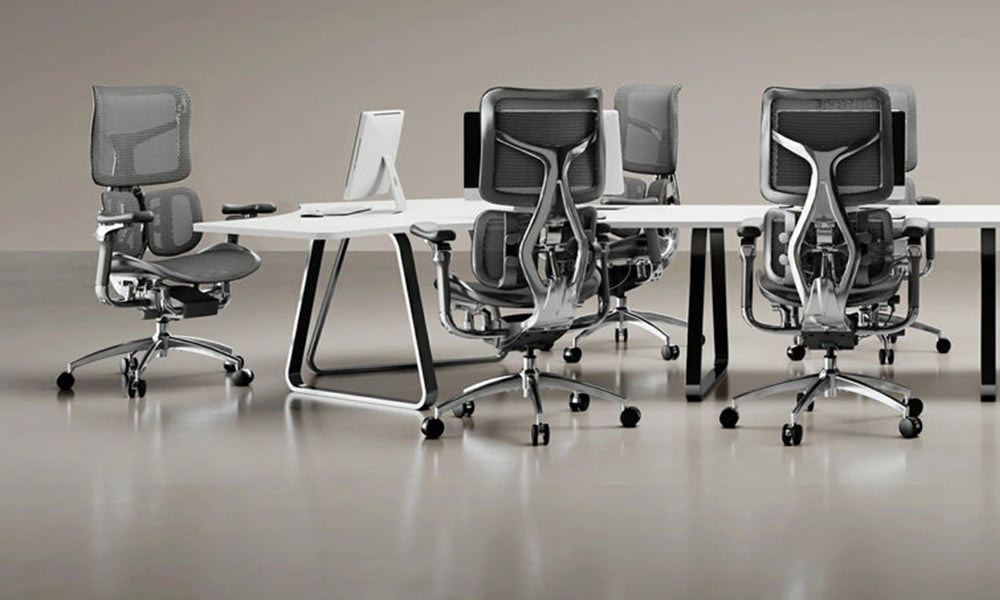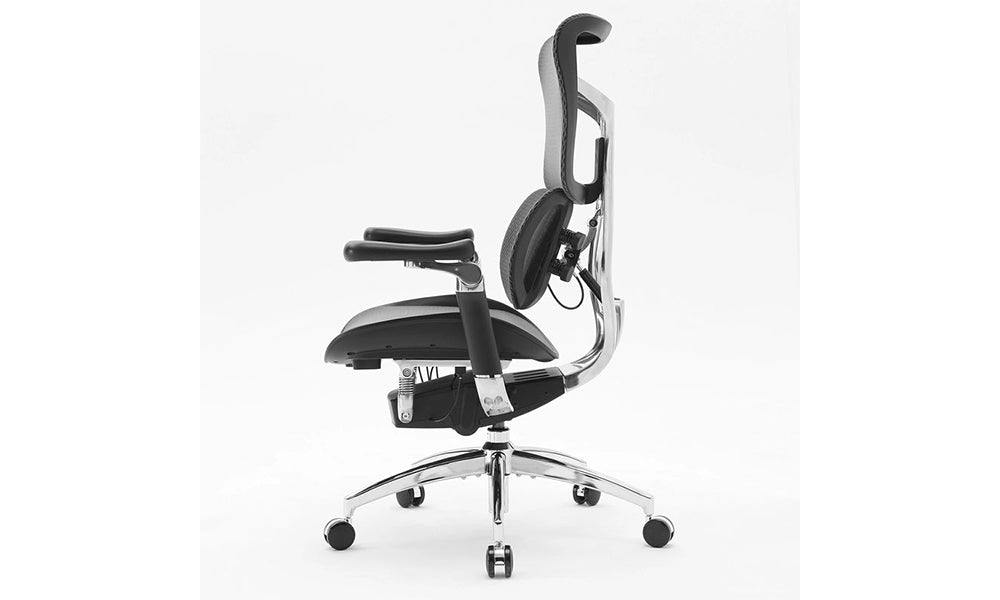Lumbar support is the term used to describe the support and comfort provided to the lower back, or the lumbar region, by a chair or a cushion. Lumbar support is one of the most important features of an ergonomic office chair, as it can have a significant impact on the user's posture, health, and productivity. In this article, we will explore the importance of lumbar support in ergonomic office chairs and how it can benefit the user.
What is the lumbar region and why does it need support?
The lumbar region is the part of the spine that consists of five vertebrae, or bones, that are located between the rib cage and the pelvis. The lumbar region is responsible for supporting the weight of the upper body, as well as allowing movements such as bending, twisting, and extending. The lumbar region is also connected to the spinal cord, which is the main pathway for the communication between the brain and the rest of the body.
The lumbar region is prone to injury and pain, especially among office workers who spend long hours sitting in front of a computer. Sitting for a long time can cause the lumbar region to lose its natural curve and become flattened or arched, which can put pressure and strain on the spinal discs, muscles, ligaments, and nerves. This can lead to various musculoskeletal disorders, such as low back pain, sciatica, herniated discs, and spinal stenosis. According to the World Health Organization, low back pain is the leading cause of disability worldwide, affecting more than 540 million people.
Lumbar support can help to prevent or reduce these disorders by providing the lumbar region with adequate support and comfort, which can restore and maintain its natural curve and alignment. Lumbar support can also help to relax the muscles and reduce the tension and stiffness that can accumulate from sitting for a long time. Lumbar support can also help to improve the blood circulation and oxygen delivery to the brain and body, which can enhance the energy, mood, concentration, and creativity.
What are the types and features of lumbar support in ergonomic office chairs?
Lumbar support can be provided by different types and features of ergonomic office chairs, such as:
• Built-in lumbar support: This is the type of lumbar support that is integrated into the design and structure of the chair, usually in the form of a curve or a bump on the backrest. Built-in lumbar support can be fixed or adjustable, depending on the chair model and brand. Fixed lumbar support is the type of lumbar support that has a fixed shape and position, and cannot be changed or customized. Adjustable lumbar support is the type of lumbar support that can be changed or customized, either manually or automatically, by using levers, knobs, buttons, or sensors. Adjustable lumbar support can allow the user to adjust the height, depth, angle, and firmness of the lumbar support, according to their body shape, size, and preference.
• Lumbar cushion: This is the type of lumbar support that is added to the chair, usually in the form of a separate cushion or a pillow that is attached to the backrest. Lumbar cushion can be made of different materials, such as foam, gel, memory foam, or air. Lumbar cushion can also have different shapes, sizes, and colors, depending on the cushion model and brand. Lumbar cushion can provide the user with extra support and comfort, as well as allow the user to adjust the position and pressure of the lumbar support, by moving or inflating the cushion.
• Lumbar belt: This is the type of lumbar support that is worn by the user, usually in the form of a belt or a strap that is wrapped around the waist. Lumbar belt can be made of different materials, such as elastic, neoprene, or leather. Lumbar belt can also have different features, such as magnets, heat, or vibration. Lumbar belt can provide the user with direct support and compression to the lumbar region, as well as stimulate the blood flow and the nerve endings, by using magnets, heat, or vibration.
What are the benefits of lumbar support in ergonomic office chairs?
Lumbar support in ergonomic office chairs can provide the user with various benefits, such as:
• Improving posture and alignment: Lumbar support can help the user to sit up straight and keep their spine in its natural curve and alignment, which can prevent or reduce the pressure and strain on the spinal discs, muscles, ligaments, and nerves. This can also prevent or reduce the risk of developing musculoskeletal disorders, such as low back pain, sciatica, herniated discs, and spinal stenosis.
• Relieving pain and discomfort: Lumbar support can help the user to relax their muscles and reduce the tension and stiffness that can accumulate from sitting for a long time. This can also prevent or reduce the pain and discomfort that can affect the user's performance and well-being.
• Enhancing energy and mood: Lumbar support can help the user to improve their blood circulation and oxygen delivery to the brain and body, which can enhance their energy, mood, concentration, and creativity. This can also prevent or reduce the fatigue and stress that can affect the user's motivation and enthusiasm.
• Boosting confidence and self-esteem: Lumbar support can help the user to adopt a more upright and confident posture, which can improve their self-esteem and their impression on their clients and colleagues, as well as their performance and productivity.
These are some of the benefits of lumbar support in ergonomic office chairs. Lumbar support is one of the most important features of an ergonomic office chair, as it can have a significant impact on the user's posture, health, and productivity. You can find various ergonomic office chairs with different types and features of lumbar support online or in stores, and choose the one that suits your needs and preferences. You can also consult an ergonomic expert or a health professional for advice and guidance on how to set up and use your ergonomic office chair with lumbar support properly and effectively.






Commenta
Questo sito è protetto da hCaptcha e applica le Norme sulla privacy e i Termini di servizio di hCaptcha.